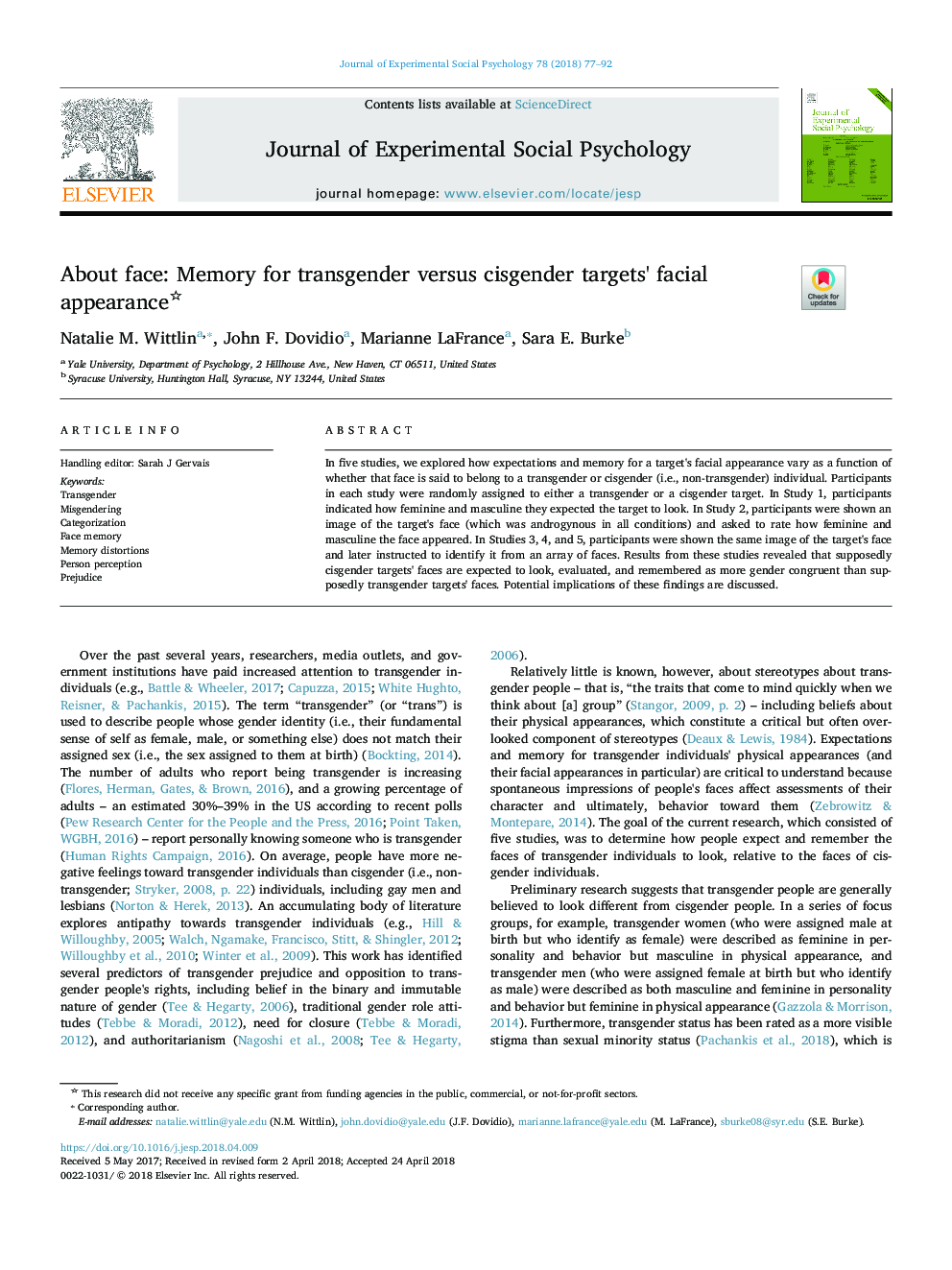| Article ID | Journal | Published Year | Pages | File Type |
|---|---|---|---|---|
| 7323959 | Journal of Experimental Social Psychology | 2018 | 16 Pages |
Abstract
In five studies, we explored how expectations and memory for a target's facial appearance vary as a function of whether that face is said to belong to a transgender or cisgender (i.e., non-transgender) individual. Participants in each study were randomly assigned to either a transgender or a cisgender target. In Study 1, participants indicated how feminine and masculine they expected the target to look. In Study 2, participants were shown an image of the target's face (which was androgynous in all conditions) and asked to rate how feminine and masculine the face appeared. In Studies 3, 4, and 5, participants were shown the same image of the target's face and later instructed to identify it from an array of faces. Results from these studies revealed that supposedly cisgender targets' faces are expected to look, evaluated, and remembered as more gender congruent than supposedly transgender targets' faces. Potential implications of these findings are discussed.
Related Topics
Life Sciences
Neuroscience
Behavioral Neuroscience
Authors
Natalie M. Wittlin, John F. Dovidio, Marianne LaFrance, Sara E. Burke,
